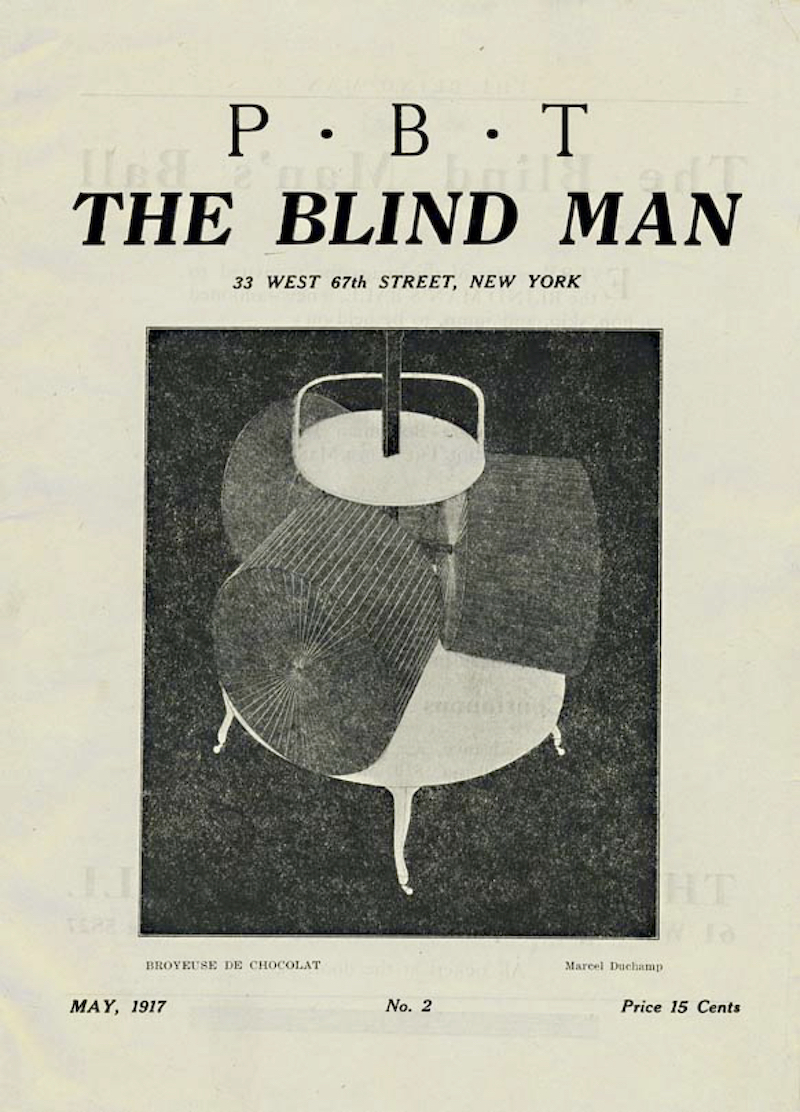
THE DAILY PIC (#1808): The Philadelphia Museum of Art has up a show commemorating the 100th anniversary of Fountain, Marcel Duchamp’s great urinal-as-art, rightly seen as one of art history’s true game-changers—on the order of Michelangelo’s Sistine Chapel ceiling or Monet’s Impression, Sunrise.
No art object in the show attracted me as much as a lovely facsimile edition of the magazine called The Blind Man, where Duchamp’s urinal first came to life. We tend to forget that Fountain, as the piece was titled, only barely had a physical existence: It disappeared early-on, after being rejected from the (supposedly) all-inclusive show Duchamp had submitted it to. It was coverage of that rejection, in The Blind Man, that really injected Fountain into our cultural conversation. (This must have pleased Duchamp, with his hatred of the “retinal”—since how could a work of art be less “retinal” than by never being seen in the flesh at all? That’s yet another reason why his later “re-editions” of Fountain, as an art-market object, have to be seen as ironic.)
Here’s something else that struck me as I leafed through The Blind Man facsimile (which is available online here): Duchamp, whom we think of as pretty much a lone genius, was in fact deeply inserted into a New York milieu. The Blind Man, whose masthead bears Duchamp’s own Manhattan address, includes pieces by such American modernists as Charles Demuth (he contributes a poem on Fountain) Joseph Stella (he got an image) and Joseph Stieglitz (a letter, with the still-radical suggestion that artists’ names be left out of art exhibitions.)
We think of American modernism as less “advanced” than the European version, but I realize now that I need to rethink American modern art by seeing Duchamp as involved in it from the beginning.
For a full survey of past Daily Pics visit blakegopnik.com/archive.